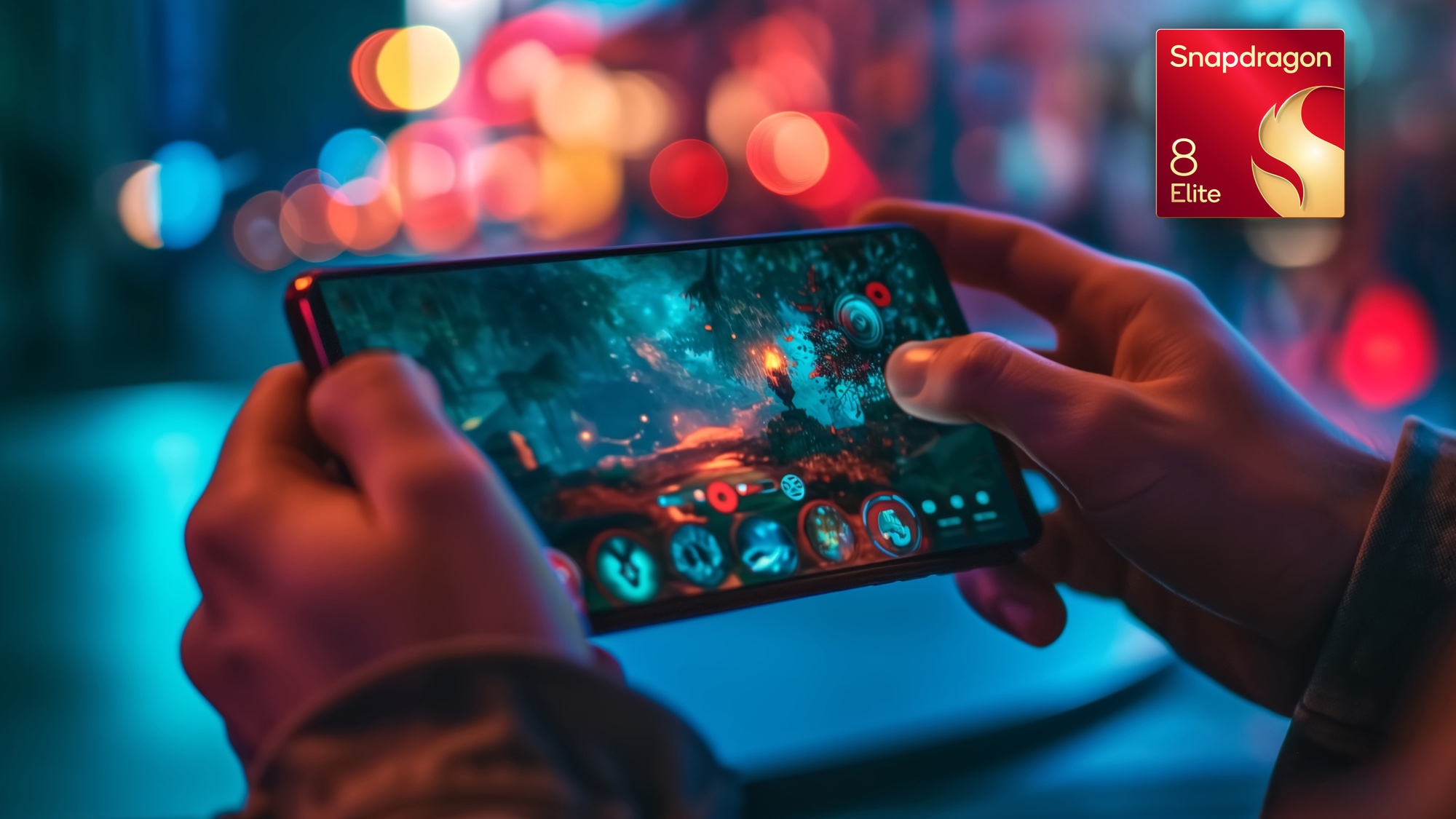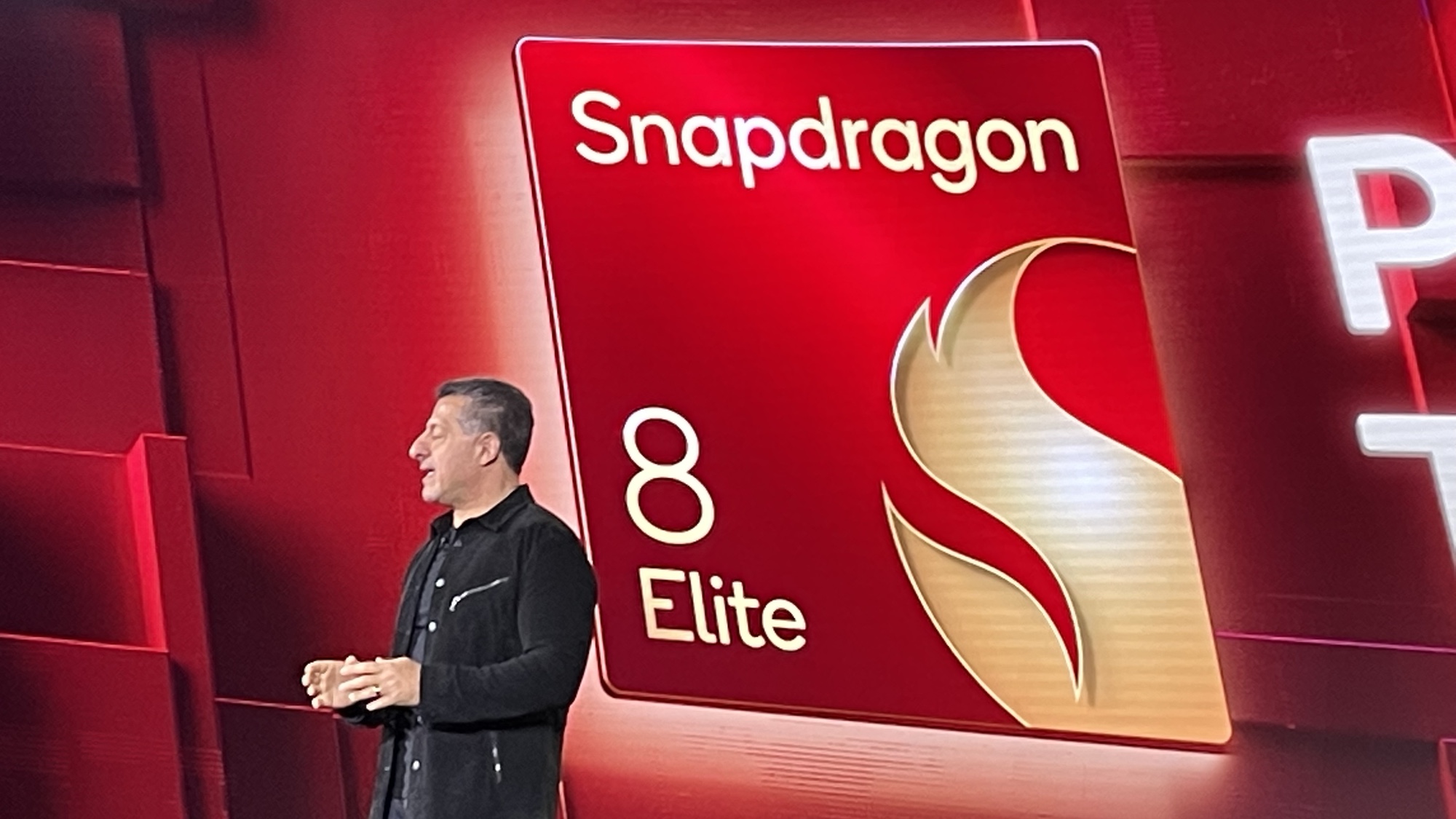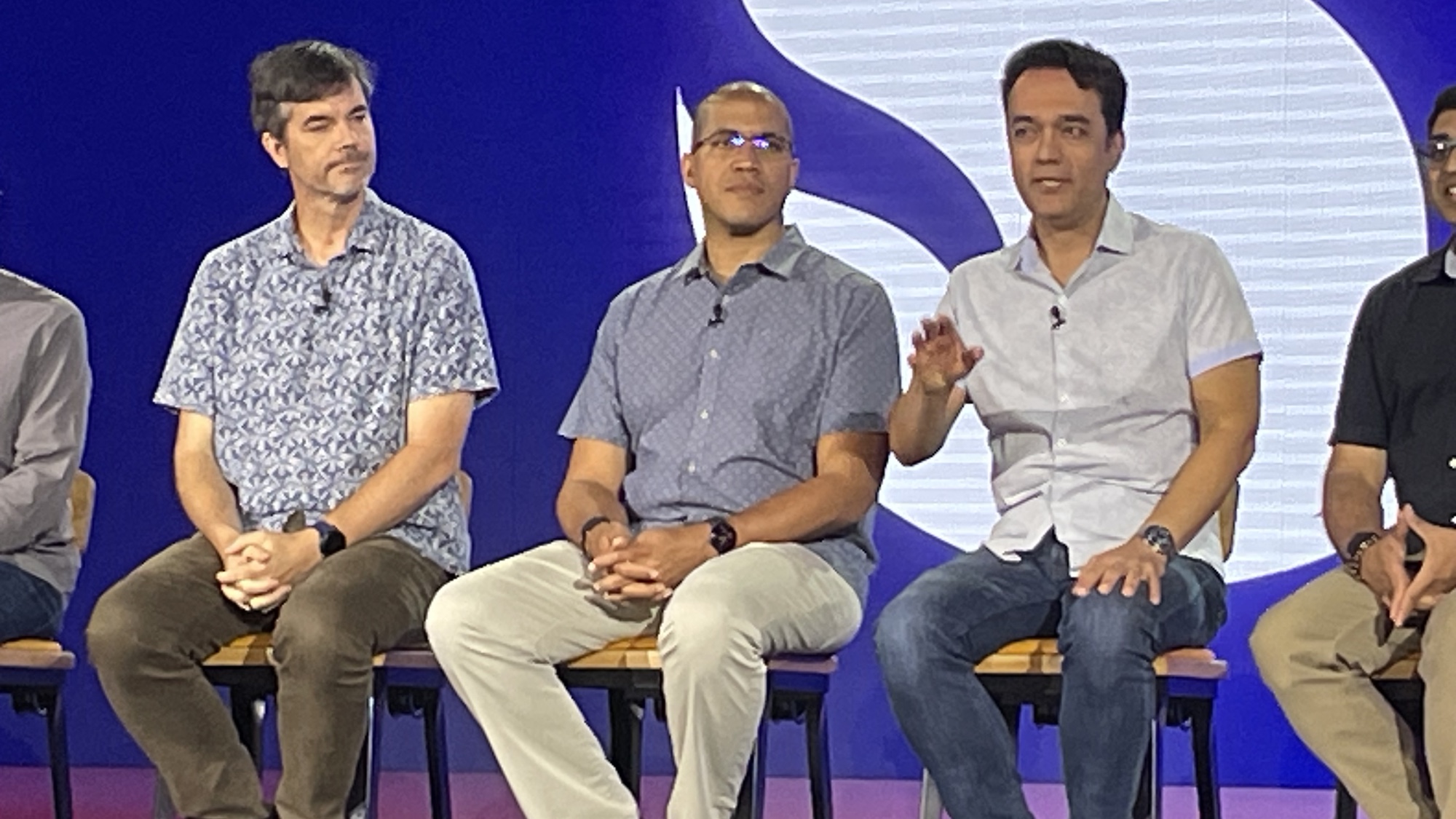
Chris Patrick, senior vice president and GM for mobile handsets at Qualcomm, says his company doesn’t design its mobile chipsets with benchmarks in mind. “But we do measure them,” Patrick told attendees at this week’s Snapdragon Summit event. And when it comes to the just announced Snapdragon 8 Elite system-on-chip that’s likely to power many of the best Android phones in 2025, it’s clear that Patrick likes what he sees.
Qualcomm has touted some pretty eye-opening benchmarks for its new silicon, with the Snapdragon 8 Elite posting numbers of the Geekbench test of general performance that top Intel’s new Lunar Lake chips — impressive since the latter is built for laptops while the Snapdragon 8 Elite powers phones.
At the same time, Qualcomm is promising power savings of 44% for the Snapdragon 8 Elite’s CPU and 40% for its GPU over the Snapdragon 8 Gen 3. And that chipset was hardly an energy hog, as it powers several entries on our best phone battery life list.
So how did Qualcomm manage to deliver that mix of performance and power efficiency? I’m attending the Snapdragon Summit as a guest of Qualcomm’s and that meant joining other reporters in a roundtable discussion with Patrick on the Snapdragon 8 Elite. What follows is en edited transcript of the questions I asked the 28-year veteran of Qualcomm covering topics like the reasons behind the changes Qualcomm made to its top-of-the-line silicon and what impact users might notice on things like camera performance.
Tom’s Guide: Could you talk about the advantages of switching to your own custom-built CPU with Oryon?
Chris Patrick: Most technologies we use are designed to in-house, and for us, we find that adds a lot. Because in the end, we have a pretty complicated architectural build, and there are many decades of evolution for how we want to handle a low-power operation and a very fast ramp to to these extreme kind of peak capabilities, how we want to do data movement across the system, how we might manage current spikes and just everything that goes into these incredibly complicated devices that we almost take for granted some times. So having the CPU be part of that portfolio in our products, we thought it was going to be very powerful.
And then we had ambitions to do more than what we were getting with with just the roadmap from our vendor. I think we were excited about the opportunity, and it’s worked out to be kind of exactly what we wanted. It’s something that was a kind of a major, major leap forward in performance, as we described it [at the Snapdragon 8 Elite launch] — our desktop class CPU, but still with this mobile power efficiency range. Something that was very high in peak capability, but also could go down to the battery sipping levels that we need for mobile.

TG: What steps do you have to take to balance the power versus the efficiency? What’s the trick?
Patrick: It’s the right microarchitecture that can stay efficient across each of these. It’s very hard. It’s like trying to be an Olympic athlete in two different sports at the same time. It’s very difficult, having to train for both at the same time. But again, the right microarchitecture can do it. And then the right [system-on-chip] design with the right hooks around it can do it.
So if there is an Olympic sport we’ve been training for, it’s this — how to do technology, incredible technology, but able to scale it down to very incredible levels of power efficiency.
TG: Regarding the Adreno GPU, what are the advantages of the sliced architecture that you're introducing this time around?
Patrick: We've been working on a certain philosophy of architecture design on the GPU for many years, where it was really was… not monolithic, but had a very heavy sharing across the GPU architecture. As we discussed [at the Snapdragon 8 Elite launch], one of the things that we want there to be more and more advanced nodes, as the needs of the smartphone product grew and grew. We found actually that we needed a more modular architecture, where there were more dedicated resources for… trunks of that GPU.
It's definitely not multiple GPUs, but still, it's a more modular architecture. That's the concept of a slice, that you sort of slice off pieces of it and they're somewhat independent.
We found as we moved to these more advanced tech nodes, technology, this architecture, this partitioning lent itself much better to scaling up to the incredible kind of power that phones needed while still managing the power efficiency at the bottom.

TG: With the Hexagon neural processor getting more direct access to images and the image signal processor, what are ways that end users are going to notice that with the pictures on their Snapdragon 8 Elite-powered phones?
Patrick: One of the very direct ways is segmentation, inline segmentation. We can take a photo and then afterwards, AI can figure out “that's actually a leaf and not part of somebody’s hair, so I want to process it this way. That's actually a flower, I want to process it this way.” That's always possible to do with post-processing. and that's good. But in the interim, we’re losing information to make a better photo.
You’re using your naked eye to look at the beautiful scene outside, You don’t realize it, but really, you’re processing different things differently based on context.
The beauty is that if we can use we can use our AI resources live, not post processing, but live to identify features in the scene and be able to do real-time feedback, we end up with a better results.
So autofocus and white balance and color compensation — all of those things, if we can do some of those things live, we end up with a better balance. You can say that the consumer won’t say “I can definitely tell this one had Direct Link enabled.” They won’t say that. But they will see in the end more pleasing photos, photos that better capture what their their eye would have captured.
You have something that rivals any PC you've ever used most likely in your pocket in the smartphone.
— Chris Patrick, Qualcomm
TG: If you had to boil it down to an elevator pitch, just one feature to tell someone that this is why you should be excited about this chipset, what would it be?
Patrick: Over-indexing on CPU a little bit is hard, but I can’t not this time. This is really what’s special — it’s a desktop-class CPU, mobile-level power efficiency.
You have something that rivals any PC you've ever used most likely in your pocket in the smartphone. It's going to knock out a whole new set of use cases — no hesitation about productivity use cases, gaming use cases, AI use cases, complex applications. You cannot hesitate about any of those things. Using an incredibly complex web page with a thing in the links that never quite works, all that's gonna work now on your phone with no challenges, no issues, no lag.







